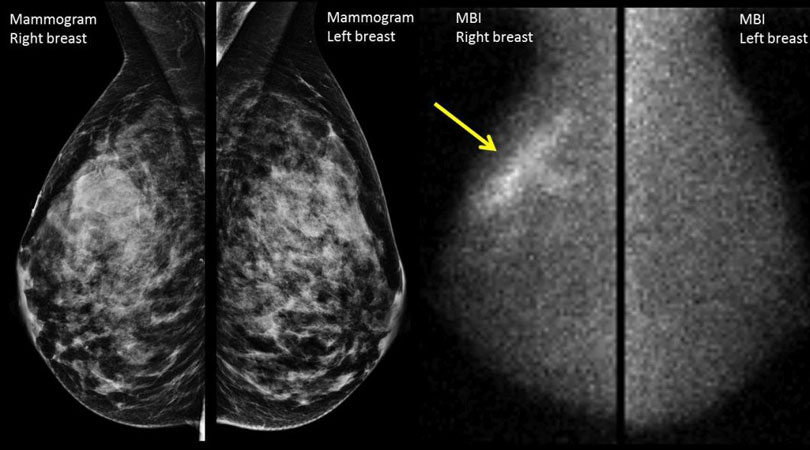
VAK operates Digital Mammography scan facility, which focus their attention towards a high quality yet low cost service through volumes.
A Mammogram is an X-ray picture of the breasts. It is used to find tumor and to help tell the difference between noncancerous (benign) and cancerous (malignant) disease.
Why is Mammography test Performed?
- Mammography is performed to screen healthy women for signs of breast cancer. It is also used to evaluate a woman who has symptoms of a breast disease, such as a lump, nipple discharge, breast pain, dimpling of the skin on the breast, or retraction of the nipple.
- Screening mammograms help improve the detection of early breast cancer, when it is more likely to be curable.
- Most but not all organizations recommend women for breast cancer screening at age 40 and have repeat mammograms every 1 to 2 years.
- All women over age 50 should have a screening mammogram every 1 to 2 years.
- Women who have or had mother or sister with breast cancer should begin yearly mammograms earlier than the age the family member was diagnosed.
- Breast ultrasound may also be used to screen women at high risk. In addition to mammography, clinical breast exams (the health care professional checks the breasts using the fingers) and monthly breast self-exams are often recommended.
- Women aged 20 and older should have a clinical breast exam every 3 years.
- Women aged 40 and older should have a clinical breast exam every year.
- All women aged 20 and older perform monthly breast self-examination. These are general recommendations for mammography, clinical breast exams, and breast self-exam.
- Women should discuss with their personal health care provider how often to receive breast cancer screening, including mammography and clinical breast exam.
- Recommendations vary depending on personal risk factors such as strong family history of breast cancer.
How to prepare for Mammography test?
- Do not wear deodorant, perfume, powders, or ointments under your arms or on your breasts on the day of the mammogram. These substances may obscure the images. Remove all jewellery from your neck and chest area.
- Tell your health care provider and the radiologist if you are pregnant or breastfeeding.
How Mammography test is performed?
- You will be asked to undress from waist up and will be given a gown to wear. This test is performed by either sitting or standing.
- One breast at a time is rested on a flat surface that contains the x-ray plate. A device called a compressor will be pressed firmly against the breast to help flatten out the breast tissue.
- The x-ray pictures are taken from several angles. You may be asked to hold your breath as each picture is taken.
- Sometimes you will be asked to come back at a later date for more mammogram images. This does not always mean you have breast cancer. Rather, the doctor may simply need to recheck an area that could not be clearly seen on the first test.
- Digital mammography is a newer technique that allows the x-ray image of the breast to be viewed and manipulated on a computer screen. It improves accuracy, but is not yet available everywhere.



